An Atlas V rocket that was delayed by a glitch involving the second-stage booster has a new date for its launch from Vandenberg Air Force Base.
ULA officials announced in mid-January that the planned Jan. 26 mission wouldn’t occur.
“The team is actively working to resolve Atlas V second-stage booster issues discovered during vehicle testing,” ULA officials said last month. “This additional time will allow the ULA team to ensure all systems are operating nominally prior to launch.”
The glitch delaying the West Coast mission did not postpone an Atlas V mission from the East Coast.
Riding on board the Atlas V rocket will be a top-secret payload for the National Reconnaissance Office, which does not release details about its spacecraft. The mission is labels NROL-79.
Due to the clandestine spacecraft involved in this mission, the planned launch time has not been released yet.
Delayed indirectly by last year’s wildfires and technical troubles this year, an Atlas Vrocket and its clandestine cargo are on track for a Wednesday morning blastoff fromVandenberg Air Force Base.
Liftoff of the United Launch Alliance booster carrying a payload for the National Reconnaissance Office is planned during a window opening at 9:49 a.m.
Since the rocket will carry a top-secret payload into space the launch window has not been released, but it is not expected to extend beyond 10:30 a.m.
“Things are going really well,” Air Force Lt. Col. Eric Zarybnisky, 4th Space Launch Squadron commander, said Friday. “I will say we are very happy to see blue skies and that nice bright, shining sun outside. That is nice after all the rain we’ve had.”
Atlas V rockets, standing 19 feet tall and weighing 720,000 pounds with fuel, blast off from Space Launch Complex-3 Easton South Base, with the mobile service tower visible on the horizon while looking south of Ocean Avenue.
“This mission has obviously been a little protracted than we would normally have,” Zarybnisky said. “We moved the launch date twice — once due to the fires, that obviously drove some changes to our schedule, and then we had a technical issue during one of our wet dress rehearsals that we had to work through.
“We successfully fixed that issue, proved it out in a second wet dress rehearsal, and we are moving forward,” he added.
The 12,500-acre Canyon Fire that sparked Sept. 17 and damaged utilities on South Base ended up delaying another Atlas V mission and its WorldView-4 satellite.
That postponement also pushed back a planned December Atlas V mission for the National Reconnaissance Office.
“The infrastructure is ready to support,” Zarybnisky said. “We had a great WorldView 4 launch and I expect this one to go just as well.”


An Atlas V rocket is placed onto its launch pad at Vandenberg Air Force Base in preparation for the mission carrying a National Reconnaissance Office payload. (United Launch Alliance photo)
-
But early this year, a glitch involving the second stage booster popped up during vehicle testing, postponing the mission from late January.
On Friday, Zarybnisky said the team expected to work the weekend to complete final chores and conduct several readiness reviews to confirm all systems are ready for flight.
Recent stormy weather has not slowed crews from completing their task list, in part thanks to the mobile service tower — or big garage — sheltering the rocket on the launch pad. The tower will roll away in the hours before liftoff, exposing the rocket to spectators around the Lompoc Valley if fog does not hinder the views.
“There’s nothing quite like watching a rocket launch, that’s for sure,” Zarybnisky said.
The launch weather forecast is expected to be available Monday, Vandenberg officials said.
Top viewing sites for Lompoc Valley spectators without base access including the peak of Harris Grade Road, Highway 246, and near the intersection of Moonglow and Stardust roads in Vandenberg Village.
Unlike commercial customers or NASA, the National Reconnaissance Office — whose own existence remained top secret until the early 1990s — doesn’t talk about its payloads used to gather intelligence over rugged terrain or hostile territory.
“We are postured for another successful Atlas launch,” said Col. J. Christopher Moss, the 30th Space Wing commander who also will be the launch decision authority.
“These missions are critical, and our team is excited to be a part of something that will have a global impact,” he added.
The 4th Space Launch Squadron is in charge of mission assurance and safety for this launch operation.
“These launches require constant communication with a widespread team, especially with the unique challenges we faced during this mission,” said Zarybnisky, who will serve as Air Force launch director for the mission.
“With the wildfires and recent rains, the Air Force team worked closely with the United Launch Alliance to ensure a successful and safe launch.”
Quelle: Noozhawk
---
Update: 1.03.2017
.
Atlas-V NRO-79 Intruder Mission Readied For Wednesday Launch To Track Ships

The mission patch for the NRO 79 satellites has a woman warrior with an owl-eye “modification” and a Medusa shield to carry out “Victory With Intelligence” in Latin on the shield. Credit: NRO
The U.S. Air Force’s 30th Space Wing at Vandenberg AFB Calif., along with United Launch Alliance (ULA) and the National Reconnaissance Office (NRO), are poised for the planned March 1 launch of the NRO-79 mission carrying the Intruder 8 Ocean Surveillance satellite payload on board an Atlas-V 401 rocket.
The launch period for the secret payload runs for 60 minutes between 9:30-10:30 a.m. PST, (12:30-1:30 p.m. EST), with liftoff of the 191 ft. tall rocket (with no solids) occurring sometime within that period from Vandenberg’s Space Launch Complex-3 East.
Tune in tomorrow for our LIVE COVERAGE of the countdown preparations, live webcast from ULA will begin at 9:30 a.m. PST (12:30 p.m. EST). Social media hashtags #NROL79 and #AtlasV.
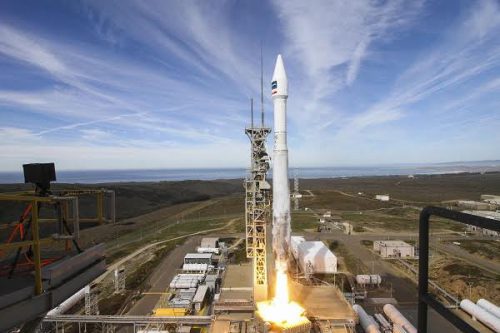
A previous ULA Atlas V 401 with no solid boosters lifts off from Vandenberg AFB Calif SLC 3 East just as the NRO 79 mission is poised to do March 1. Credit: ULA
Atlas-V Intruder missions normally carry two spacecraft that fly in formation to track global ship movements, especially warships from Russia, China, Iran and North Korea.
As with all NRO Atlas-V flights, the highly classified intelligence payload will be propelled to orbit by an 860,000 lb. thrust Russian Energomash RD-180 engine. Russian rocket engineers are routinely at Cape Canaveral Air Force Station or Vandenberg AFB, to monitor their engine’s performance parameters from a sealed computer room.
NRO 79 will mark the 70th ULA Atlas-V launch, and the 35th in the 401 configuration since the rocket’s inaugural mission in 2002. This is the first Intruder mission since Oct. 8 2015, which also launched into polar orbit from Vandenberg.
The Atlas V, with an 860,000 lb. thrust Russian Energomash RD-180 oxygen/kerosene engine, will fly on a southern trajectory along the Pacific coast of California and Mexico, past South America and over Antarctica early in its first orbit.
The spacecraft are likely to be deployed into a 1,000 x 1,200 km. (621 x 745) mile orbit, inclined 63.4 degrees to the equator. The two NRO satellites weigh nearly 4 tons each. The mission is to replace two older National Ocean Surveillance System (NOSS) spacecraft.
Because it is a secret mission, the only ascent milestones called out publicly during the launch will be RD-180 cutoff and first stage separation 4 minutes into the flight, followed by Centaur upper stage ignition at 4 min. 22 sec and nose shroud separation at 4 min 31 sec. into the flight.
The first generation of U.S. Naval Research Center NOSS satellites were launched in groups of three starting in 1976, according to Ted Molczan, an expert Canadian astrodynamist. A second generation of triple spacecraft missions was active during the 80s and 90s, followed in 2001 by the start of third generation spacecraft launch in pairs instead of triplets, Molczan said earlier (see AmericaSpace report Oct. 7, 2015).
The pairs of NOSS satellites fly in formation dozens of miles apart laterally and with the second satellite in trail of the first.
This is so electronic emissions from ships reach the satellites at different times, enabling a constant track of a ship’s direction and speed. It allows the Navy’s top secret ship tracking intelligence center to track the position and intentions of ships of every nationality around the globe.
Following the ocean surveillance mission there are 9 more military and intelligence flights, including three NRO missions, spread through the rest of the 2017 launch calendar.
Quelle: AS
---
Frams von Atlas-V-Start:
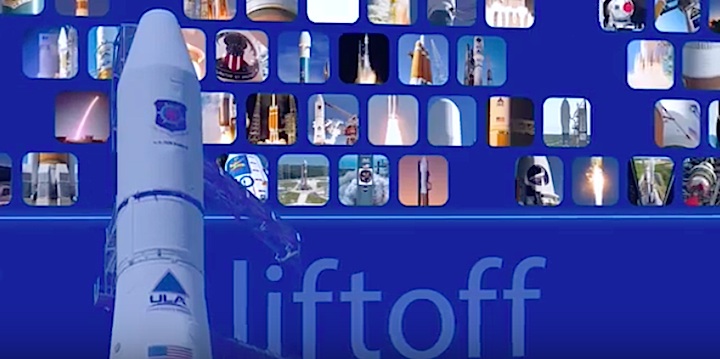
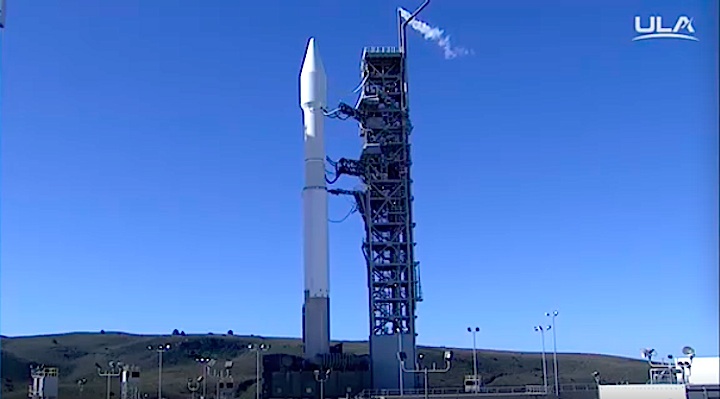

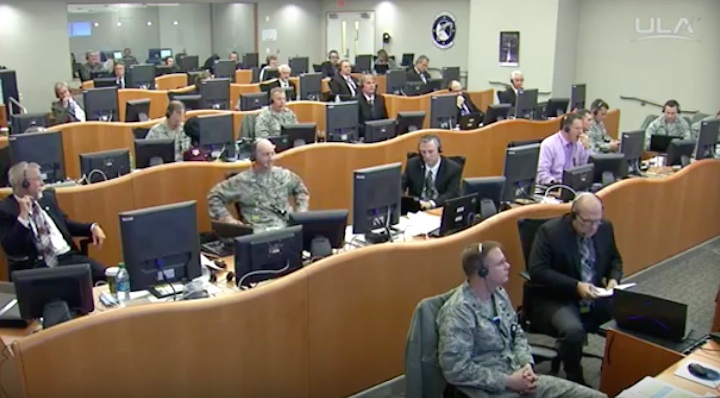
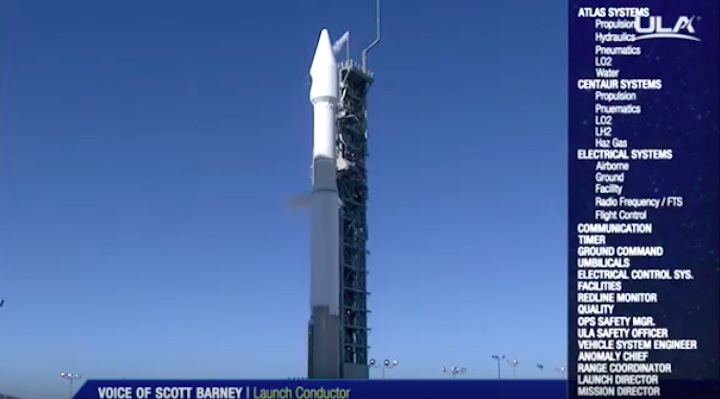
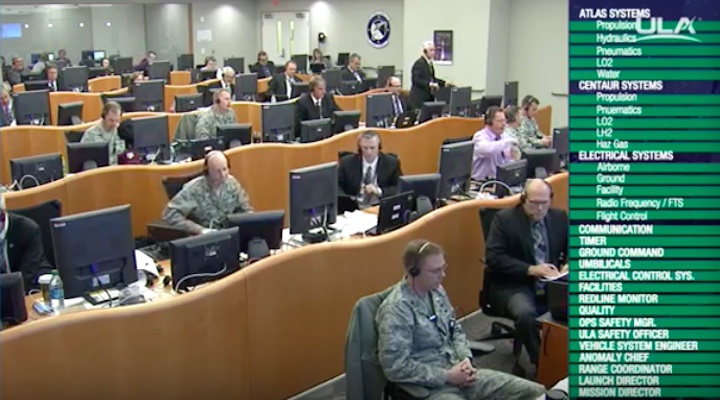
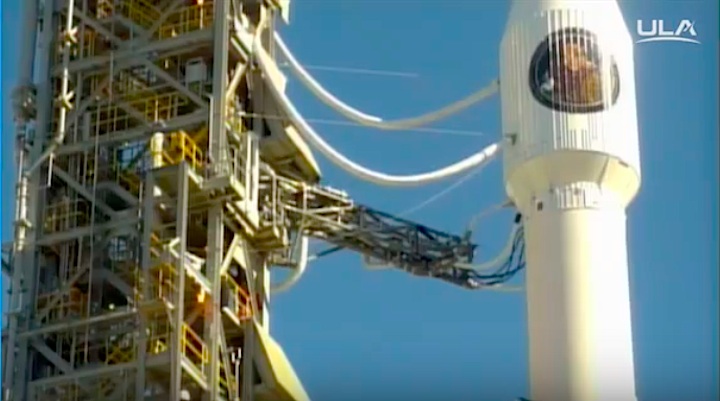
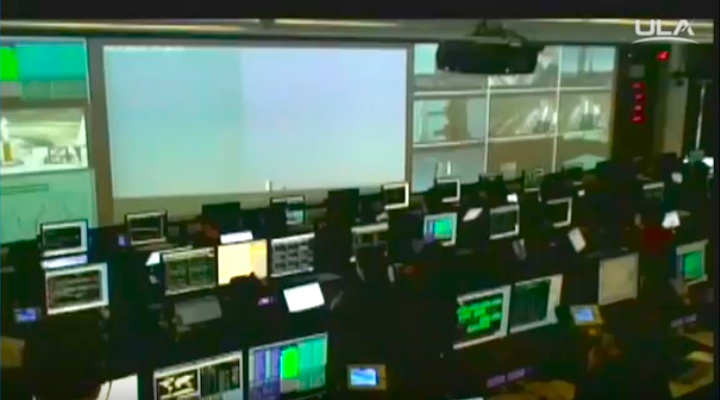

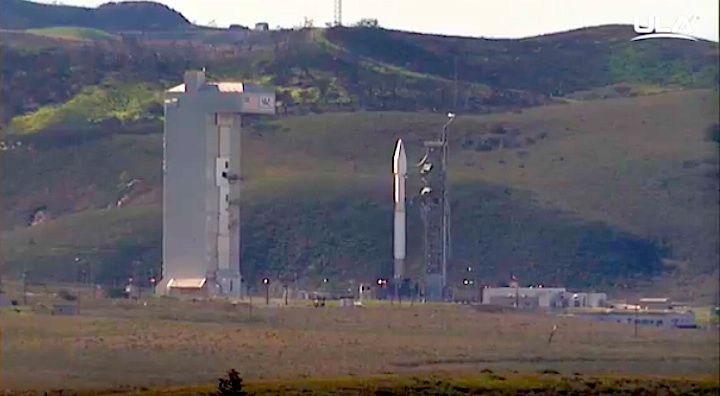
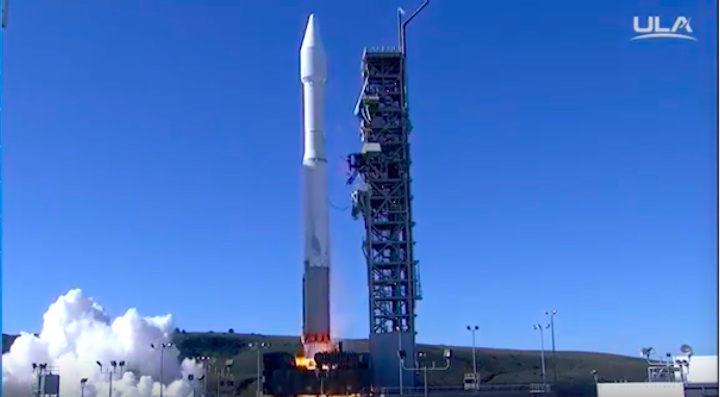
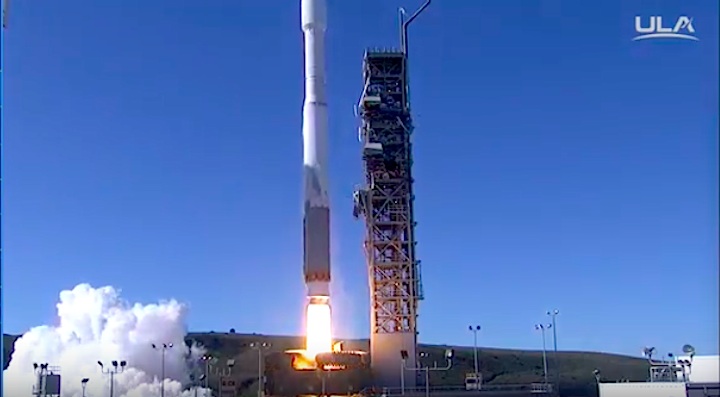
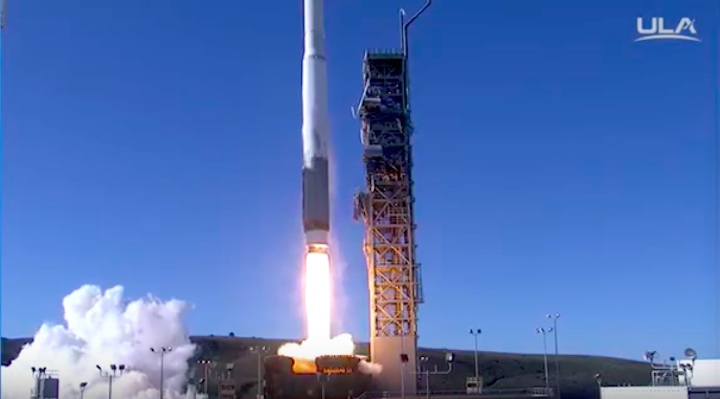
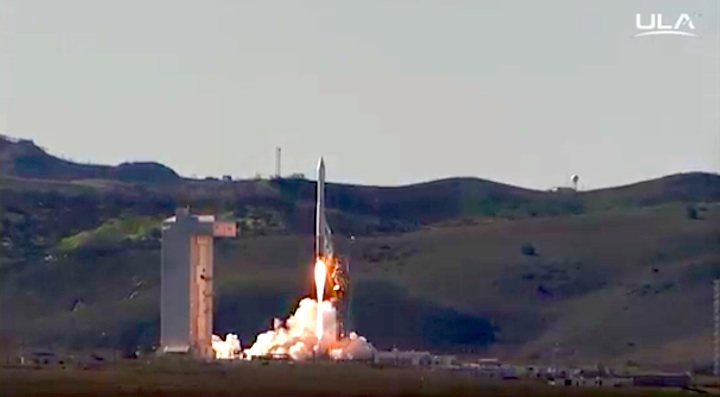
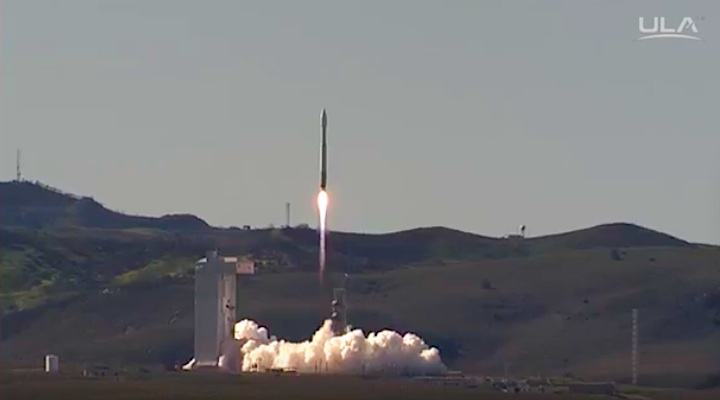
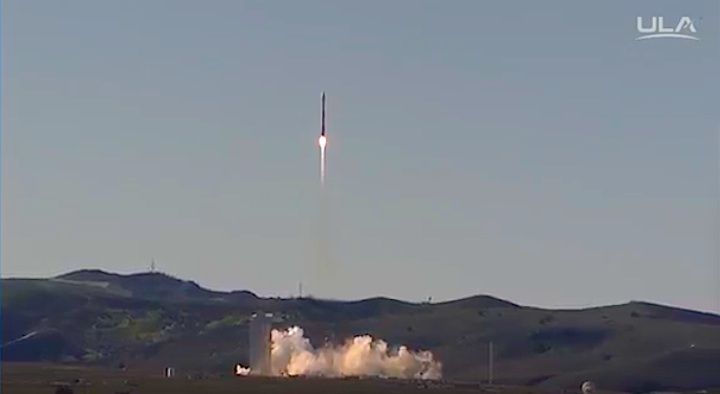
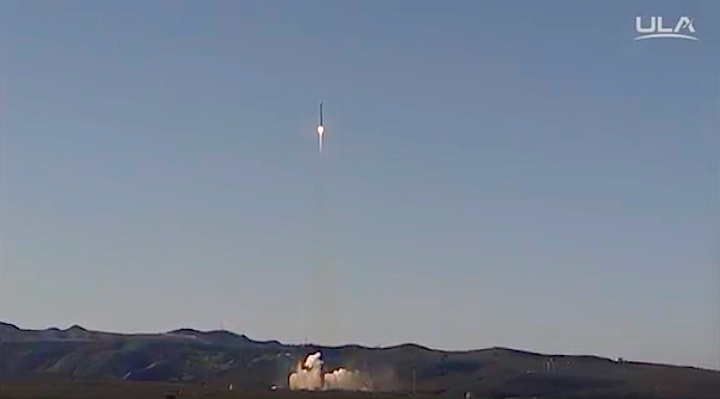
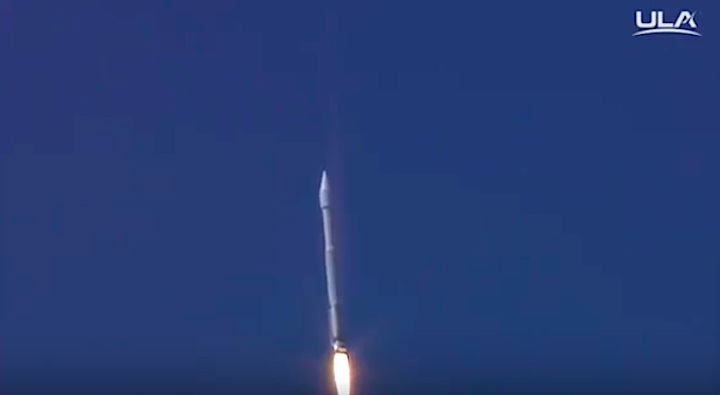
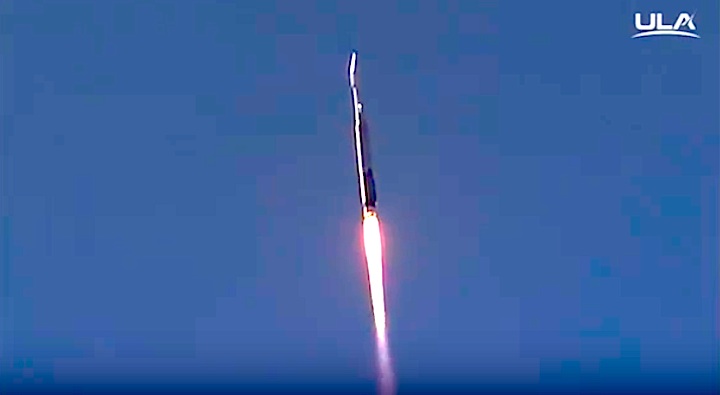
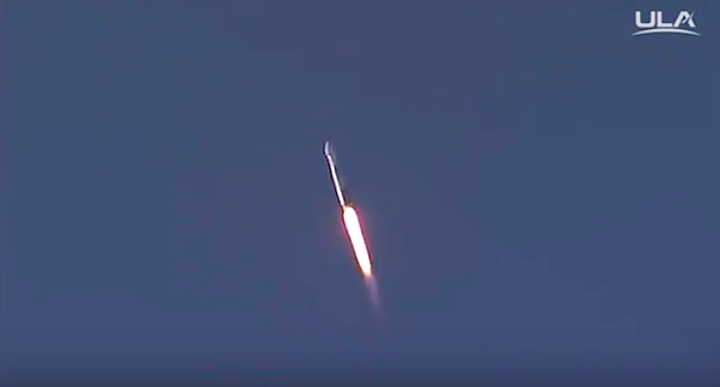
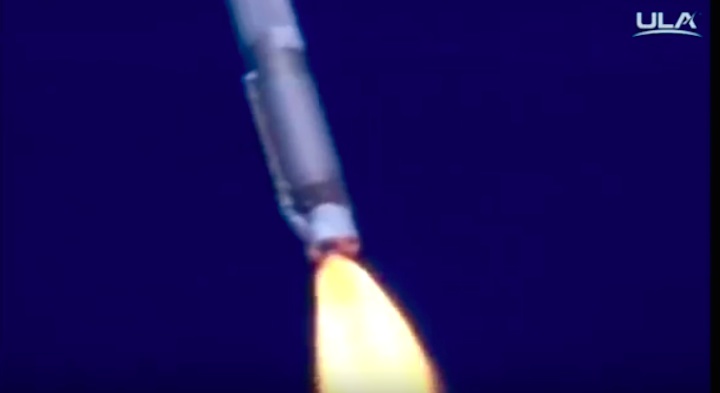
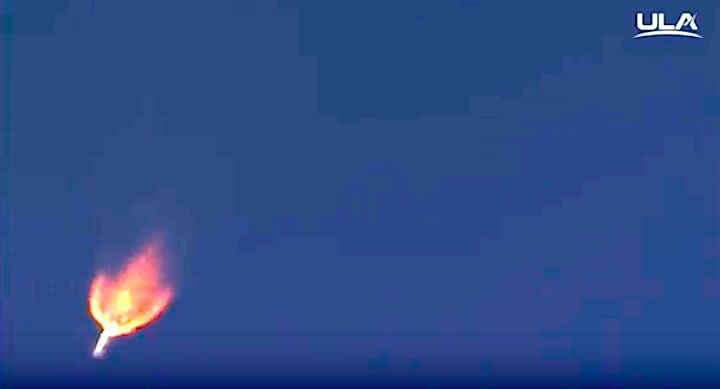
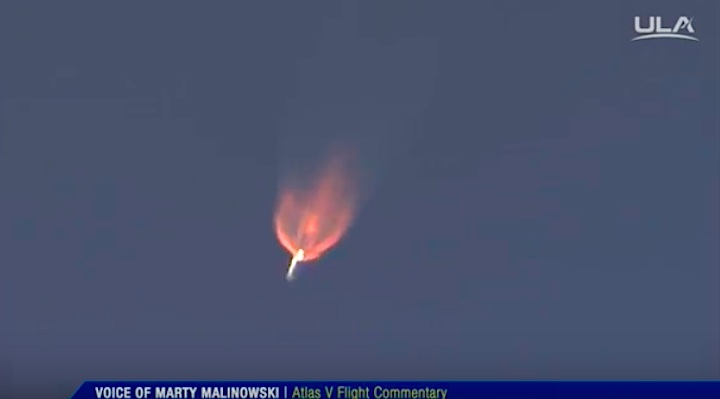
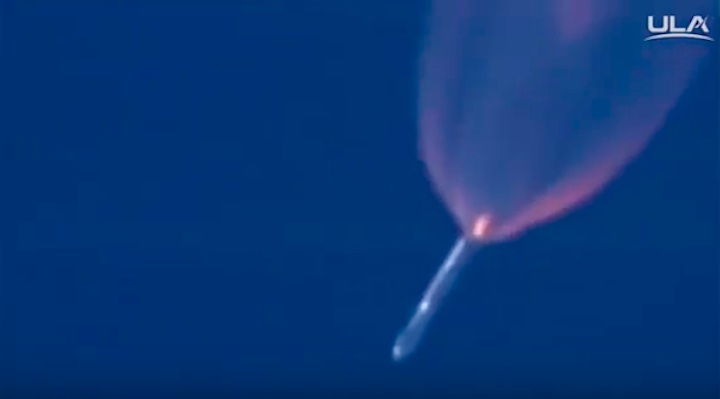

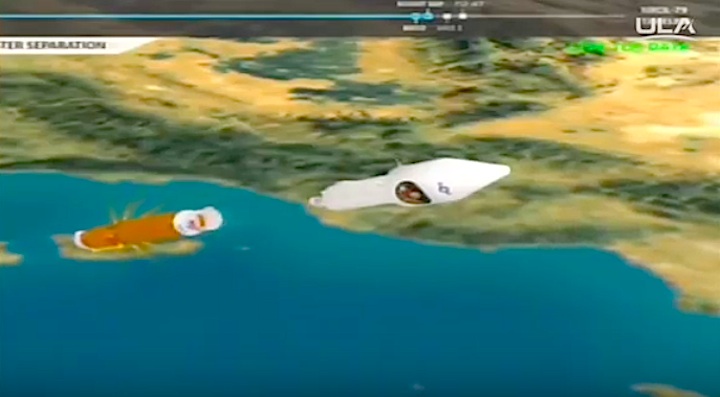
Quelle: ULA






























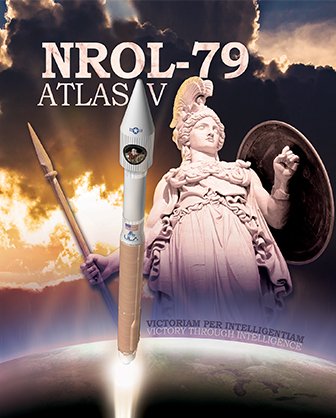
.jpg)

